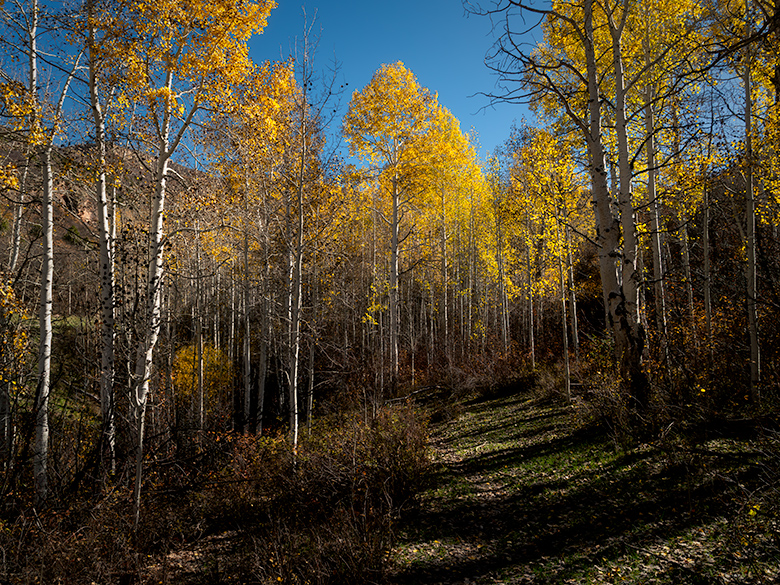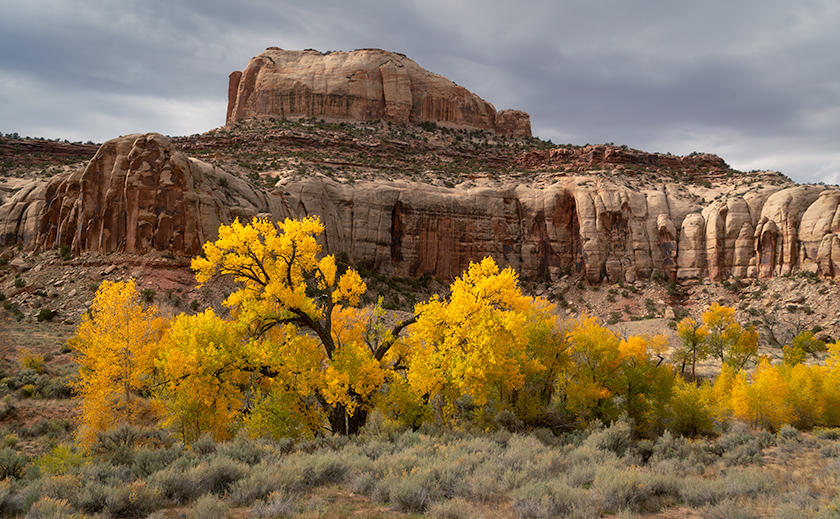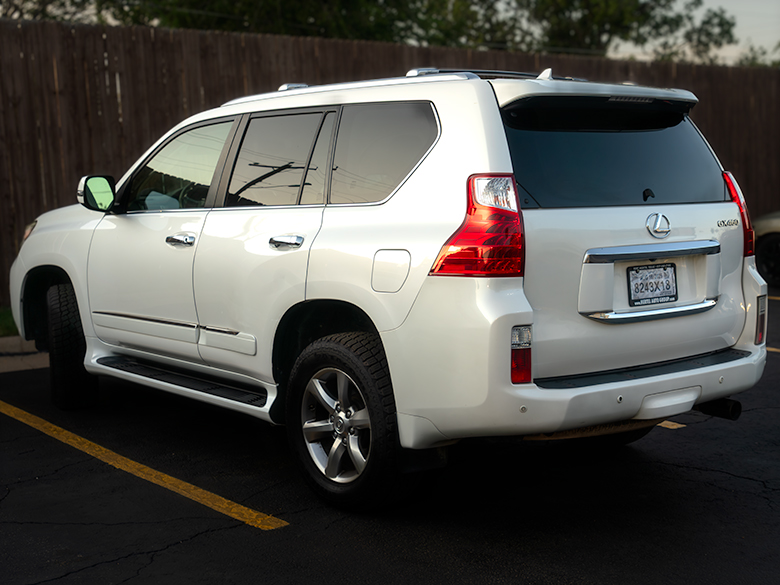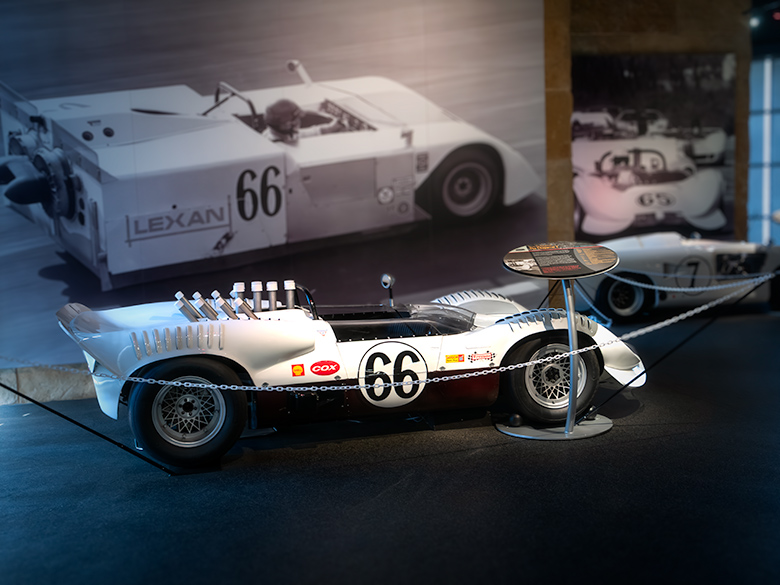
Since it’s fall, I thought I’d be sappy and bring you color. Out here in the West, we don’t get maples that light up like back-east postcards. The brightest red we get usually comes from poison oak—and you don’t want to get too close to that. So we settle for yellow. And nothing says yellow like aspen.
To find the best, you usually point your rig north—Colorado or Utah—where the trees start glowing before Arizona’s even finished summer. So that’s what we did. We’d already wrapped up a couple of ghost-town runs and figured a little bright foliage might lift the mood. Besides, it’s hard to resist a good road trip when Moby’s tanks are full and the desert air starts smelling like creosote and cold mornings.
The plan was simple: drive into the La Sal Mountains and catch the aspens at their peak, maybe find a little magic in the high country before the season shut down. What could go wrong?
Our destination was the La Sal Mountain Loop Road, a scenic back road just outside Moab. If you’ve ever seen a photo of Delicate Arch—or a Utah license plate—you’ve already seen the La Sals. They’re the snowcapped peaks in the background, quietly photobombing every postcard. The loop climbs out of the red-rock canyons east of town, winds through aspen forests at eight thousand feet, then drops back down into Castle Valley with a view that’ll make even the most jaded traveler pull over.
It seemed like a sure bet for fall color: high country, cold nights, and enough elevation change to catch the aspens wherever they were turning. At least, that was the theory.
Anne Spots Movement
We drove up the mountainside expecting hillsides ablaze in gold and found only great swaths of bare, naked aspen trees. What happened to the color?
About halfway around the loop, Anne pointed toward a stand of ghost-white trunks and said, “Something moved up there.”
I always keep a pair of compact binoculars in Moby’s center console for moments like this—bighorns on a distant ridge, the price of gas down the street, or something glinting on a mountaintop. We dug them out of Moby’s console—Anne’s mobile junk drawer—and took a long look at the slope. At first, nothing but wind and empty branches. Then a flicker—a little figure flitting from limb to limb, plucking leaves and stuffing them into a canvas bag.
At first, I thought it was a plastic grocery sack tangled in the branches until I saw the tiny arms and a pair of wings that looked like they’d been through a wood chipper. She wore a faded safety vest and carried a clipboard stamped DOGE – Department of Glorious Ecology—not to be confused with that other DOGE that’s supposed to make government efficient. A paint-stained brush hung from her belt like a carpenter’s hammer.
She wasn’t vandalizing nature; she was clocking out early. Every few branches, she’d sigh, jot something on her form, and toss another yellow leaf into the bag. If there’d been a coffee truck parked nearby, it would have felt like any other government job site.

Budget Cuts and Pronouns
I leaned out the window and called, “Hey! You’re supposed to be painting those, not stealing them!”
She froze midair. “She? Did you just assume my pronoun?”
Anne groaned. “Oh, here we go.”
The pixie fluttered down to a low branch, her wings making the sound of an overworked desk fan. “That’s how we got stopped at the border,” she said. “Paperwork said pix-person, the agent said pix-thing, and next thing you know, the entire Color Division is under review.”
“Budget cuts?” I asked.
“Budget, border, bureaucracy—take your pick. DOGE shut down the Red and Orange departments first. Said they were ‘redundant hues.’ I’m covering three zones by myself now. My wings haven’t had a day off since Equinox.” She scratched something on her clipboard and added, “Yellow’s all that’s left of management’s color vision.”
Anne whispered, “Sounds like the post office.”
The pixie shot her a look. “We’re not immigrants, you know. We were here before here was here—long before you lot fenced off the seasons and called them federal lands.”
Then she sighed, tired but defiant. “Anyway, I’d love to stay and chat, but I’ve got to pull enough leaves to make room for next year’s paperwork.”
The pixie glanced down-canyon and pointed with her brush.
“Look, the Red and Orange crews were supposed to handle the low country. When the shutdown hit, they took their pigments and went underground—literally. The only ones still working are the new hires down in the riparian corridor. They’re painting cottonwoods now. Sloppy work, but at least they’re still funded.”
She stuffed one last leaf into her bag and muttered, “Follow the color; you’ll find them. Maybe they’ve got spare brushes.”
Then she was gone—vanishing downslope in a shimmer of gold dust that drifted like pollen.
Anne squinted in the direction she’d pointed. “So, we’re following the color?”
I nodded. “Yeah. If we can’t find fall up here, maybe it’s punching the time clock down below.”

Following the Color
We took the hint and followed the road downhill, tracing the same path the pixie had pointed out. The air warmed by the mile. The scent of dust and sun-baked pine gave way to damp soil and sage.
At first, there were only scattered patches of yellow tucked into the drainages—halfhearted attempts at autumn—but the farther we dropped, the thicker the color grew. The gray skeletons of aspen gave way to cottonwoods crowding the creeks, their leaves catching the low sun like gold coins at the bottom of a dry purse.
It wasn’t the spectacle we’d chased, but it was alive—bright, chaotic, and noisy with wind. Every bend of the creek reflected another ripple of color, as if someone downstream still had a paint budget.
Anne leaned out the window and grinned. “Looks like the night shift clocked in.”
Original Division
Down along the creek, we found them—recruits, by the look of it. A half dozen pixies buzzing from tree to tree, spilling paint like kids learning finger art. Their color work was enthusiastic but uneven: one cottonwood blazed with a highlighter-yellow hue, while its neighbor resembled Dijon mustard. They were getting more paint on each other than on the leaves.
The veteran from up the slope hovered nearby, clipboard in hand, trying to supervise without much success. When she spotted us, she landed on a cattail and sighed.
“Contractors,” she said. “They’re from the Original Division—been here since before DOGE invented paperwork. They never migrated; they just never left. She said some of them get reassigned off-season to the Rock-Stabilization Division — you know, the ones who build cairns on hiking trails. Figures.” (I ran into their handiwork once on Little Granite Mountain)
Anne looked around at the bright chaos, the sunlight flashing through yellow leaves like a million tiny mirrors. “So they’re the old guard?”
“Old guard,” the pixie said. “Old gods, if you want to get technical. We just call them legacy staff.”
Then she tucked her clipboard under one arm, wings drooping in the heat. “I keep telling management, you can’t outsource experience. But what do I know? I just hold the brush.”

Autumn’s Lesson in Restraint
Eventually, the veteran pixie called it quits. She uncapped a canteen, took a long pull of something that probably wasn’t water, and checked her clipboard one last time. “That’s it for me,” she said. “The rest’s up to wind and sunlight.”
With that, she fluttered off down the creek, trailing a shimmer of gold that rippled through the leaves behind her. For a moment, the color deepened—as if she’d signed her work—and then the shimmer faded, leaving the trees to their own devices.
Anne watched until the sparkle was gone. “Well,” she said, “I guess autumn didn’t fail after all.”
I nodded. “Nope. Just got efficient.”
The creek whispered below us, gold reflections dancing in the shallows, the aspen ghosts far above catching the last of the day’s light. Autumn, I realized, wasn’t a failure of color but a masterclass in restraint—the season teaching us that refinement is the art of knowing when to stop painting.
Till next time, keep your spirits high and wear nitrate gloves while painting.
jw
By the Way — 2026 Calendars
It’s that time again when I start thinking about next year’s calendars. They’re the usual 8½ x 11 spiral-bound editions, printed on heavy card stock that can survive a full year of thumbtacks and coffee stains. I need one for myself, of course, but if you’d like a copy, let me know by November 20 so I can have them ready to ship before Christmas.
They’re $12 each—I know, not exactly Costco pricing, but you won’t find these hanging next to the puppies and muscle cars.
You can reply to this post or use the contact page on my website to reserve your copy.




